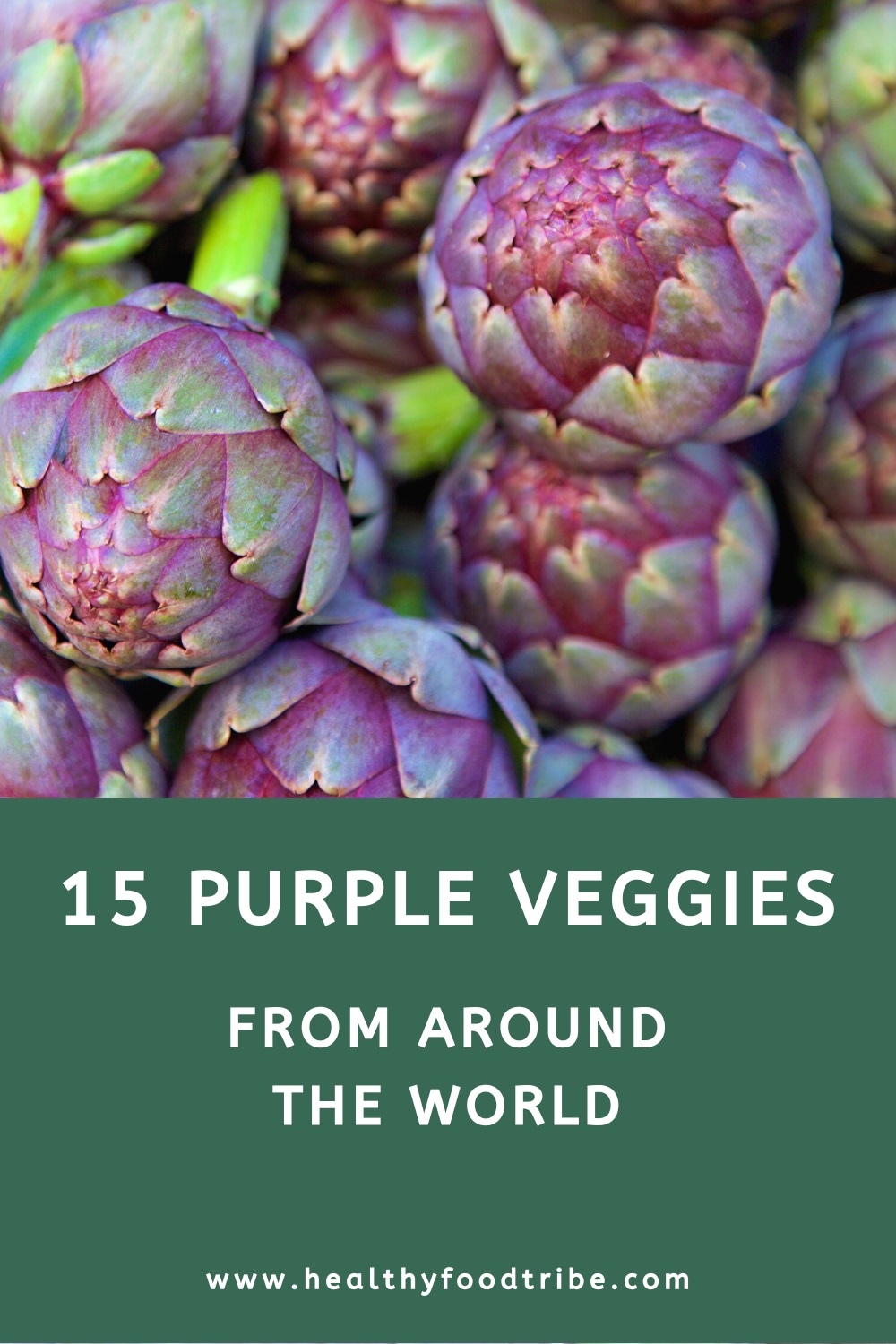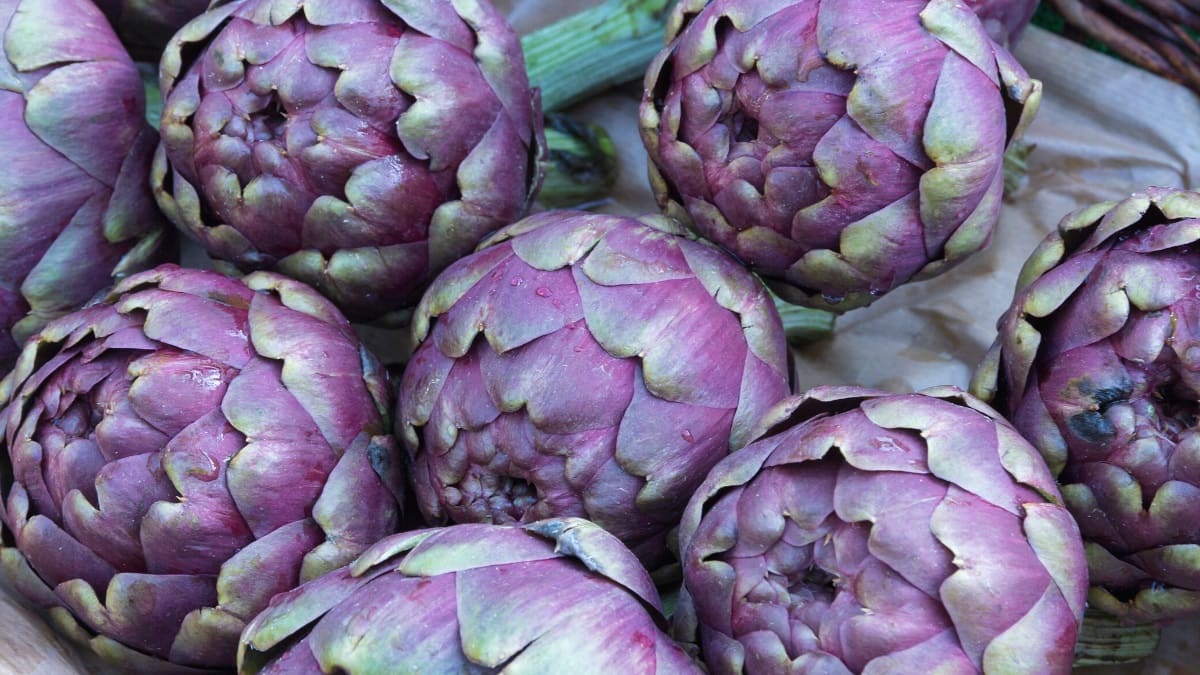Last updated: April 19, 2024
Discover 15 stunning purple vegetables from around the world that will add a vibrant splash of color and nutrition to your kitchen and your meals.
Purple is a rare pigment in nature, but it does occasionally occur in flowers, fruits, and vegetables. Thanks to human ingenuity and some clever selective breeding, there are a lot more purple vegetables on the shelves than what nature alone could produce.
Below are fifteen of my favorite purple vegetables from around the world that you should try!
Interested in the fruit version as well? Check out my guide to purple fruits for a complete list of the most delicious purple-colored fruits out there.
1. Beets

Somewhere between deep crimson and grape purple lies the uniquely dark pigment of beets. These vegetables are valued for their large round taproot, which is simultaneously sweet and earthy. It’s a bit of an acquired taste; most people either enjoy beets or detest them.
If you’re in the latter category, it’s worth giving beets a chance. Not only are they packed with antioxidants, but they’re also a great source of folate and manganese.
Beets can be eaten raw in salads, juiced, or roasted. Borscht, a cold, sour beet soup, is potentially the most famous beet dish. It hails from Ukraine and is a beet-specific take on an ancient soup by the same name popular throughout Eastern Europe.
Beets also exist in yellow/golden color. Check out my list of yellow vegetables for more popular veggies with a bright yellow color.
2. Purple Artichokes
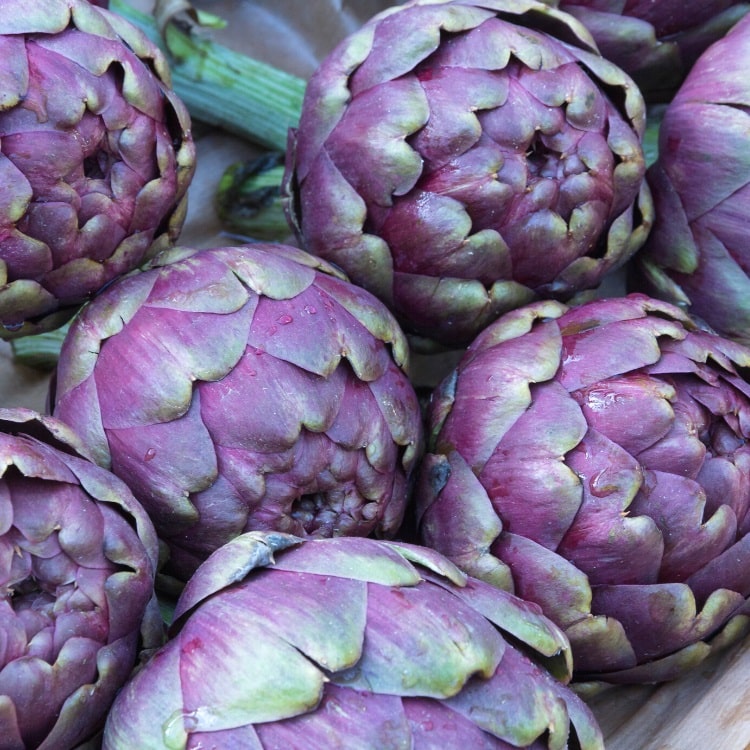
Purple artichokes are a rare find but worth searching out. These specialty cultivars display dark or pale purple leaves. The leaves are a more typical yellow-green on the inside and contain the same gorgeous purple heart as traditional varieties.
More so than many green cultivars, purple artichokes tend to be meaty and flavorful. They don’t lose their spectacular color during cooking, making them a great way to add a little festive flourish to your dinner plate.
Like traditional artichokes, they are best prepared steamed or baked with a healthy heaping of butter and mayonnaise.
3. Purple Cauliflower
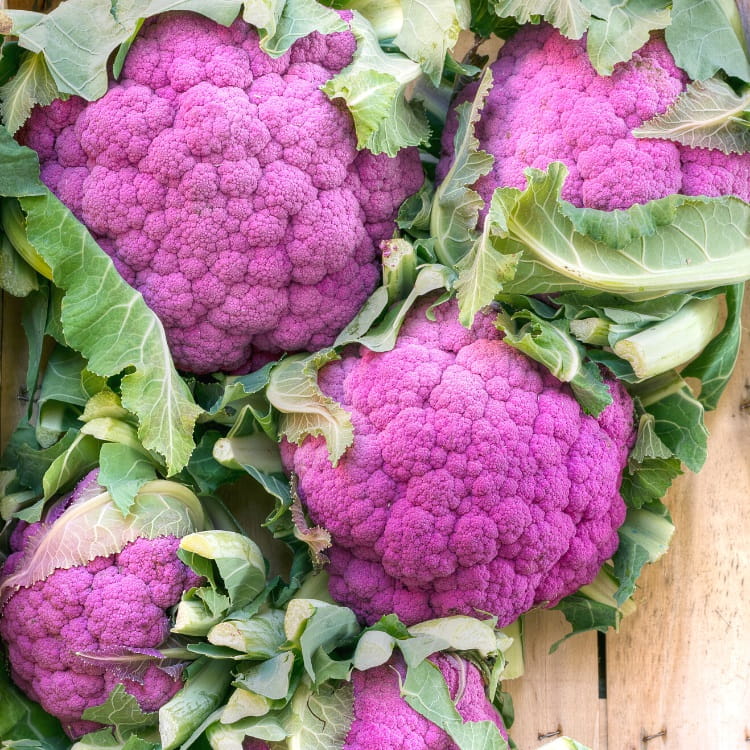
Purple cauliflower is a special cultivar that has been bred for its high concentration of anthocyanin. Against an otherwise colorless background, this pigment creates a hue that is so purple it looks fake. It’s a typical case of selective breeding.
While the flavor of this vibrant veggie is similar to white cauliflower (and green and orange), the nutrient profile is different. In addition to more antioxidants, purple cauliflower also has more vitamin A.
Boiling colorful cauliflower will cause the pigment to run, leaving you with gray heads and vibrantly violet water. Instead, roast or sautee this cauliflower to show off that color. Standard preparation will yield a gorgeous lavender blue, while adding a bit of vinegar will preserve those deep purple hues.
4. Eggplant

Eggplant is probably the most popular purple vegetable in the world. But did you know that this strange nightshade comes in more than one color? In fact, the name eggplant comes from the small, white, round cultivars that resemble chicken eggs.
Other colors of eggplant include deep purple, blackish-purple, yellow, and mottled purple and white. This veggie also comes in various shapes, from round egg-like cultivars and traditional plump, elongated fruits, to super-skinny, long varieties.
Eggplants are most often eaten cooked. They can be roasted, sauteed, or fried. One of the most popular eggplant dishes is eggplant parmesan, which consists of breaded eggplant with marinara and melted cheese.
The Chinese eggplant is also purple. Check out my list of Chinese vegetables for more popular Chinese veggies and tips on how best to prepare and eat them.
5. Purple Kale
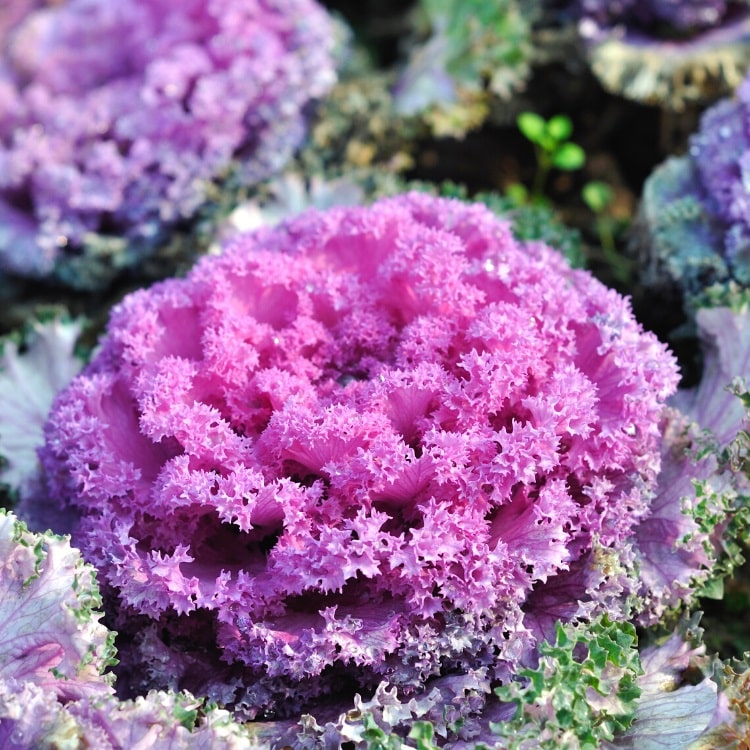
There are three popular purple cultivars of kale. The first is a Fuschia variety cultivated from Dwarf Scotch kale. This kind is typically used as an ornamental plant (because it’s so pretty!) but is also edible.
The second kind is a purple variety of red Russian kale that has magenta veins and purple stems with pale green leaves.
The third is Redbor kale, which has bright purple stalks and tightly curled purple-blue leaves. These two varieties are most often used for cooking or eating raw.
6. Purple Basil
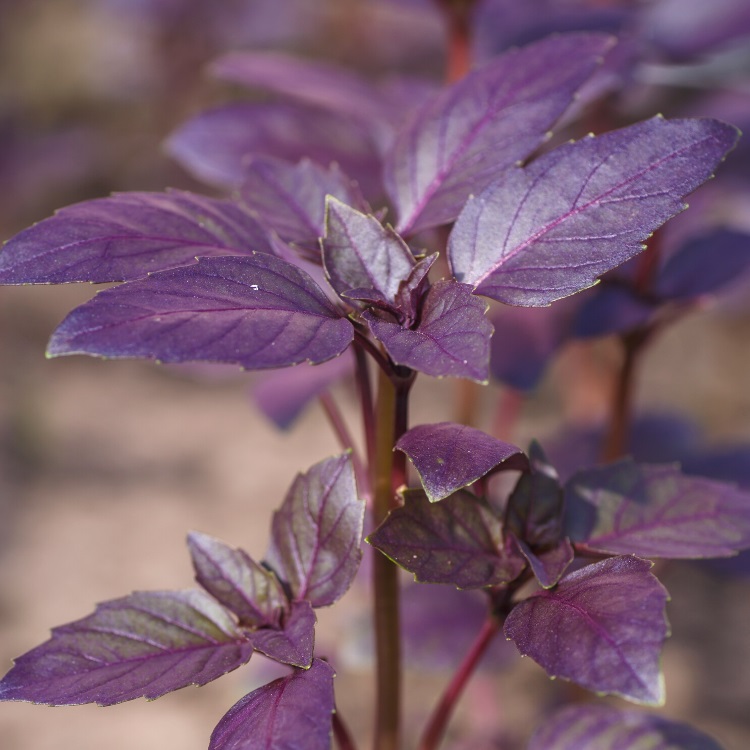
There are several purple basil cultivars, but the most famous is osmin purple basil. This variety is very dark purple, with almost no green coloring on the entire plant. Other purple varieties range from violet with green accents to mostly green leaves with reddish-purple veins.
Most Thai basil cultivars feature purple stems and green leaves, but some varieties also have purple leaves. Thai purple basil is spicy with a distinct anise flavor.
There are also multiple varieties of purple sweet basil (including osmin purple basil). These have a sweeter flavor but are not as sweet as green cultivars. They tend to have a noticeable clove flavoring as well.
Purple basil tends to turn black with even the slightest heat. For this reason, it is best to enjoy your purple basil as a garnish or raw topping.
7. Purple Tomatillos
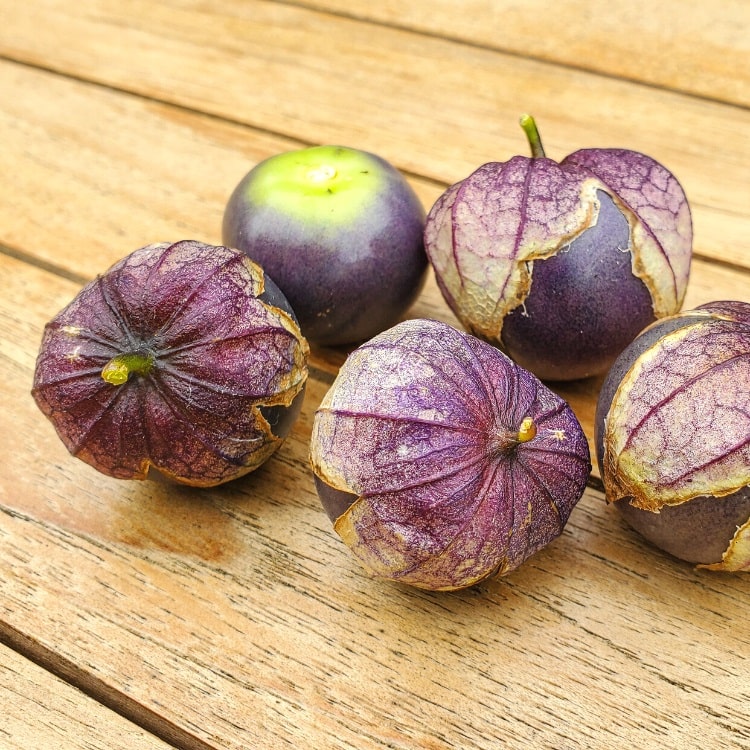
Purple tomatillos have a deep purple color and somewhat resemble plums once peeled. These juicy, fleshy nightshades have a sweeter flavor profile with less tart acidic-ness than their green cousins. Much more so than green cultivars, these are often enjoyed raw straight off the vine.
The purple pigment that colors the skin gets darker when the plant is exposed to more sun. That coloration extends into the flesh, which lightens to white at the center of the fruit.
These gorgeous violet vegetables can be used to make sauces and salsas or mixed with rice to add color and a unique flavor to traditional Latino recipes.
8. Purple Asparagus
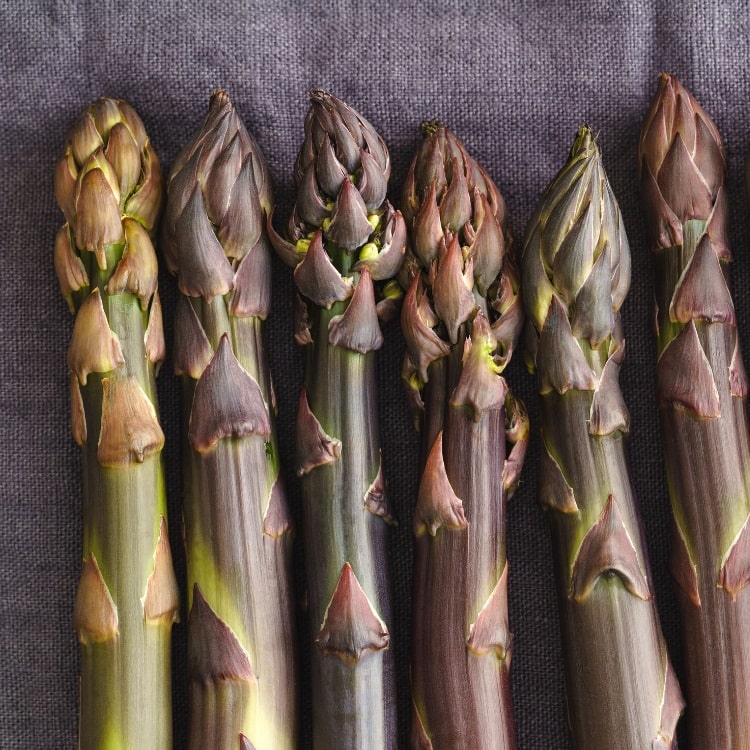
Asparagus comes in three distinct shades: green, white, and purple. While white asparagus is just green asparagus grown without light, purple asparagus is its own unique cultivar. This type contains a high amount of anthocyanins, which give it a deep violet-purple color.
Purple asparagus also has its own flavor. These stalks have about 20% more sugar than their green relatives. This makes for a deeper flavor profile that is more sweet and nutty than earthy.
Cooked purple asparagus retains some color but is less dramatic after roasting or sauteing. For a better way to take advantage of that great color, I recommend preparing purple asparagus in raw salads.
The white version of asparagus is included in my guide to white vegetables. Check out that guide for a complete list of delicious white veggies.
9. Turnips

Turnips come in three main colors: white, scarlet, and purple. In all three varieties, the color is most concentrated in the crown, where the root is exposed to sunlight. The lower part of the root remains white.
Purple turnips range from light violet to pinkish purple, with the colored section making up only a small portion of the otherwise white bulb.
Turnips can be enjoyed in a variety of ways. To retain the color, skip the peeling and roast the veggies rather than boiling or steaming them. You can also eat them raw, though the tough skin (where the purple is) makes peeling them necessary.
10. Purple Brussels Sprouts
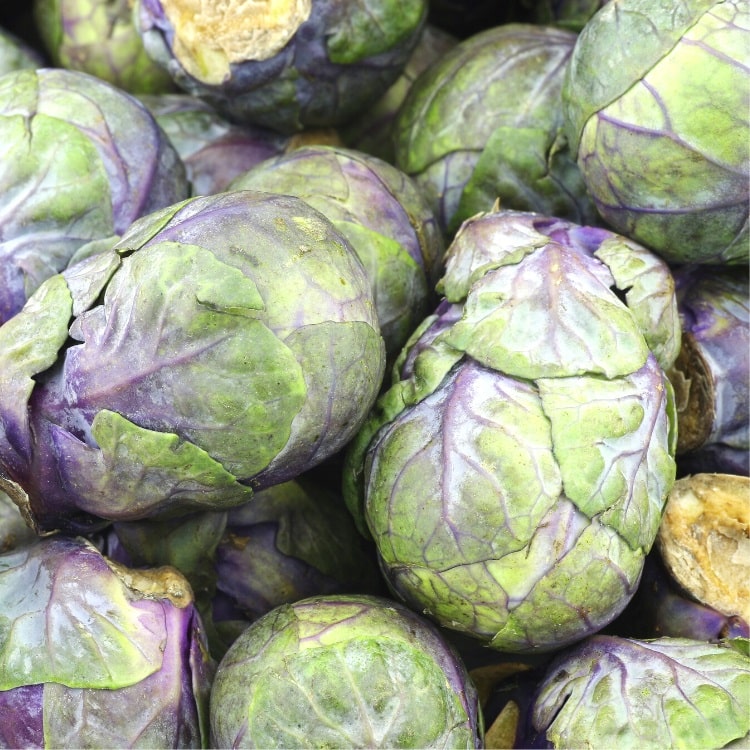
Even if you aren’t a fan of Brussels sprouts, we recommend giving the purple beauties a try. Compared to traditional green varieties, the purple cultivar tends to be sweeter, with a milder, less earthy flavor.
It is the veins of these Brussels sprouts that sport the most color. The vibrant Fuschia flows into deep, earthy green toward the outer edges of the leaves. This coloration becomes more vibrant after cooking, which makes for some beautiful dishes.
Like traditional sprouts, these pretty Brussels can be roasted whole or halved, or sliced raw and added to salads.
11. Purple Kohlrabi
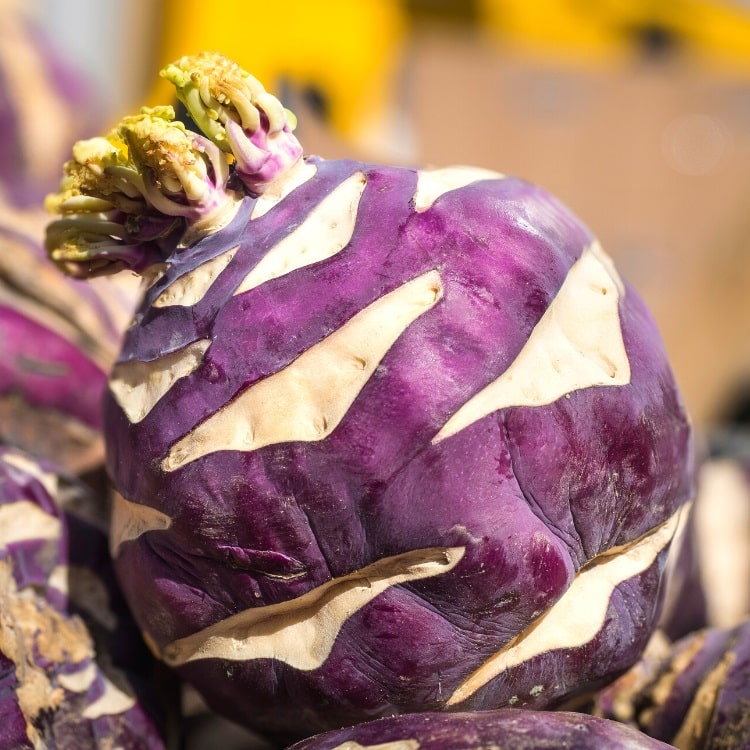
Kohlrabi, which is a type of wild cabbage, somewhat resembles a turnip, except that the large edible ball is actually a part of the stem, not the root.
Most kohlrabi are whitish green with bright green leaves. The rarer purple kohlrabi features a swollen pinkish-purple stem with purple stalks that give way to green leaves.
The flesh inside the purple ball is white, just like with traditional cultivars. But the flavor is sweeter, and the texture is much crisper. Kohlrabi is consumed both raw and cooked. In either case, the purple “peel” is removed, and only the white flesh is used.
12. Purple Peppers
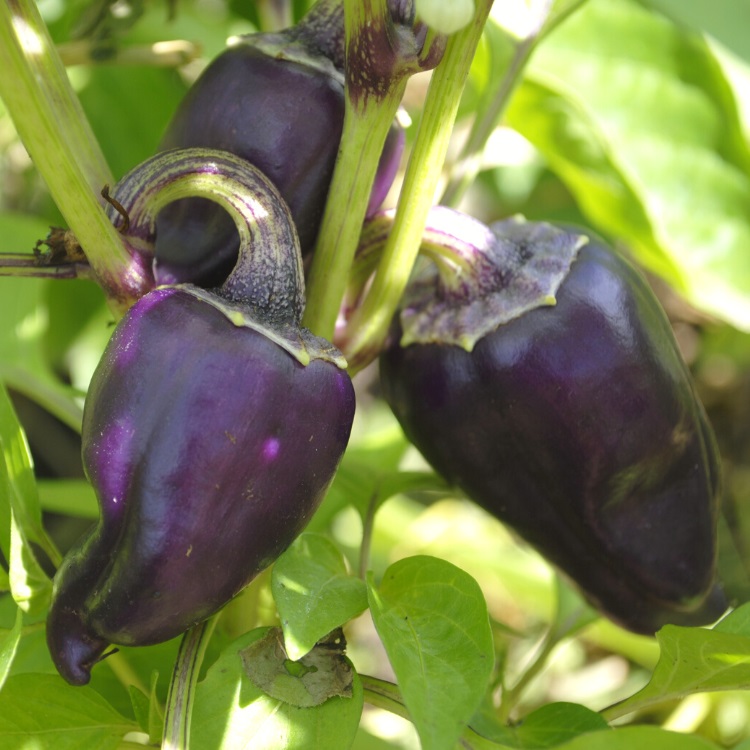
A number of pepper varieties are now available in shades of purple. Some of the most popular include purple bell peppers, purple jalapenos, and purple Marconi. The purple pigment does change the flavor slightly, but how exactly depends on the variety.
Purple bell peppers, for instance, are slightly less earthy and grassy tasting than green varieties but are not nearly as sweet as red, yellow, or orange. Purple jalapeno peppers, which will turn red if left to mature, were created using ornamental hybrids and are not nearly as hot as typical green or red jalapenos.
Purple peppers will lose their pigment and revert to green during cooking. So save these beauties for use as snacking peppers, in salads, or as raw garnishes.
13. Purple Yam
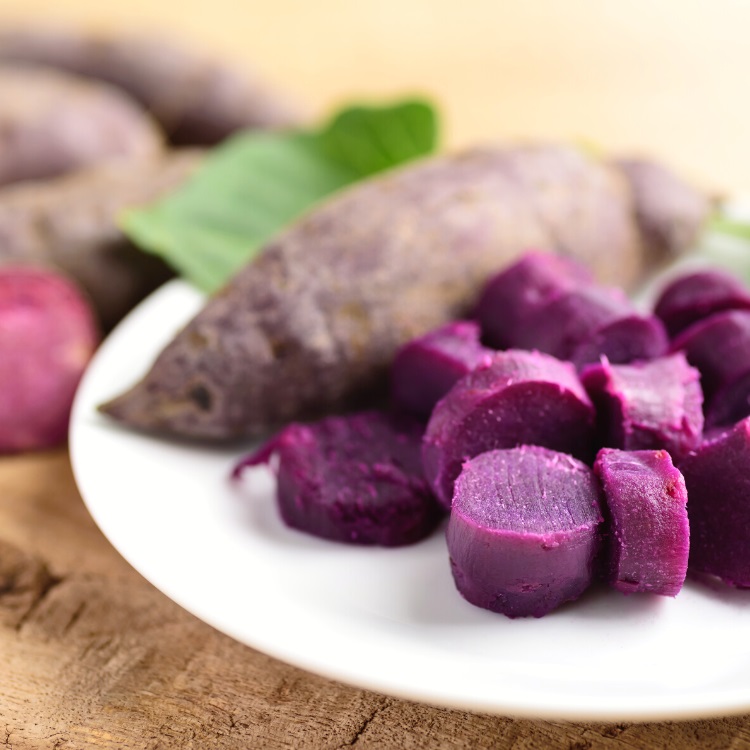
Often confused with purple sweet potato, purple yams aren’t much to look at from the outside. The thick skin has a brownish-purple color that does nothing to prepare you for the vivid violet pigment inside. These tubers are so purple that they are often made into flour and used to color cakes and other desserts.
They are not as sweet as orange sweet potatoes and have a wine-like flavor backing the typical earthy taste. They are much starchier and dryer, which is what makes them a good candidate for turning into flour.
Purple yams are popular in the Philippines, where they were first cultivated. There they are known as ube and are often used to make cake and cheesecake and to flavor ice cream, milk, and donuts.
14. Purple Radish
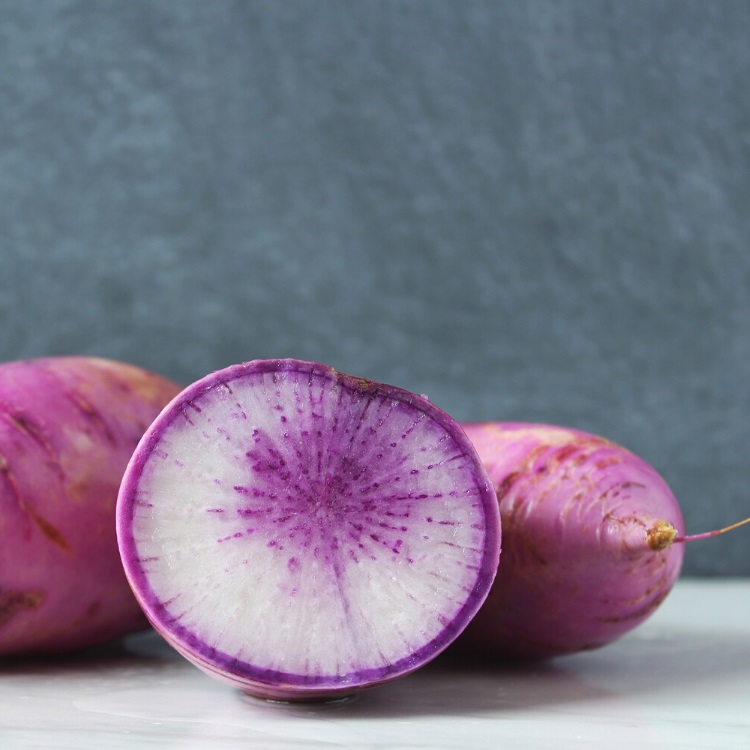
Radishes come in many colors beyond traditional red. Some of the most striking are the purple cultivars. These deeply hued varieties are available in many types, from small round easter eggs to large, elongated tubers.
The skin varies from red-purple to pale purple-blue. All have bicolored flesh with purple pigmentation fading to white.
Like other varieties, purple radishes make an excellent choice for slicing into salads or onto dip platters. They look especially striking when served along with pink, yellow, red, and white varieties.
15. Purple Sweet Peas
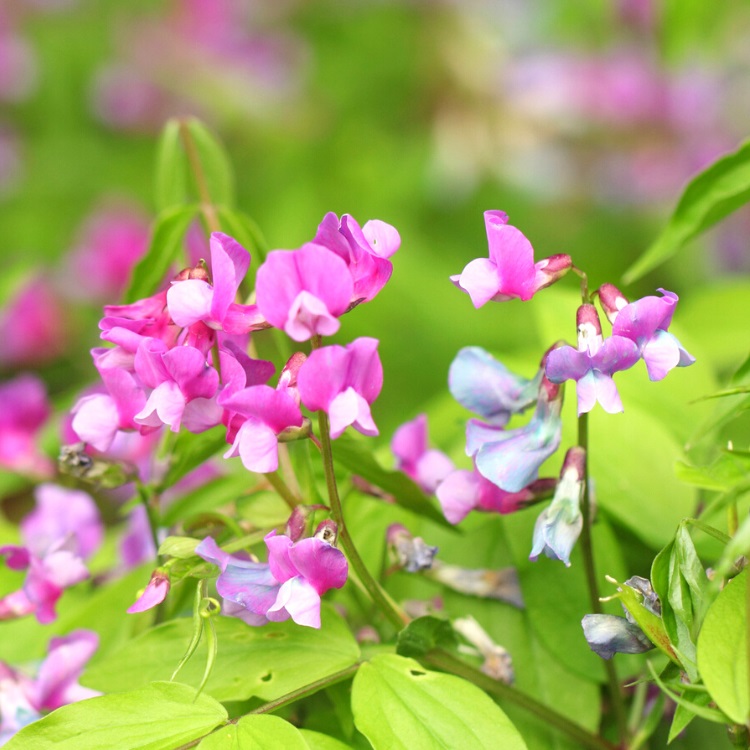
While there are plenty of sweet pea cultivars that produce purple flowers, there are very few varieties that produce purple pea pods.
These peas feature deep purple pods with pale green insides and typical green-colored peas. While the peas themselves lack the gorgeous pigment, the whole pods can still be used in salads to add a splash of brilliant color.
If you can hunt down some of these seeds, they are absolutely worth growing, both for adding color to the garden and for adding to your plate. If you search hard enough, you can also find purple snow peas and snap peas.
